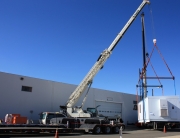“The cranes themselves don’t cause accidents, the accidents are mostly caused by the people surrounding and using the cranes.” Søren Jansen, CEO of a large crane rental company and an insurance investigator, says.
According to the crane industry specialists, most of the accidents at workplaces are largely caused by inadequacies – which may have happened in several forms. The inadequacies may range from the errors to willful acts. Moreover, the experts believe that the errors at workplace may also be caused by the mishandling of assigned projects.
There have been very rare incidents at the workplaces, which are either directly or indirectly concerned with the design and manufacturing issues. In some situations, some designs and manufacturing standards have caused problems to the crane operators.
So, in line with the findings and experts’ suggestions, it appears to be a high time for crane operators to switch their attention from technical issues to the behavioral concerns. They need to think over their ways to operate the crane machines.
The crane experts have suggested a way for the health & safety executives that they should look into the methods and the undertakings which operators go through. In addition, they should also check if the operators are utilizing high-end and advanced safety devices so as to check mishaps. Though the crane machines are being featured with such devices like Load Moment Indicators (LMI), Wind Indicator, etc., yet owners and operators do often find a way in which they inactivate the safety devices while operating crane machines.
There are so many advanced devices available for different crane machines, but they seek operators’ high attention and good behavior for avoiding any possible threats. In addition, it is also important for operators to have a proper strategy to handle the projects. They should devise their strategy in such a way that if Plan A goes ineffective, Plan B should be there to take control and conclude the assignment safely and securely. And above all, the strategy should be in compliance with international standards.








